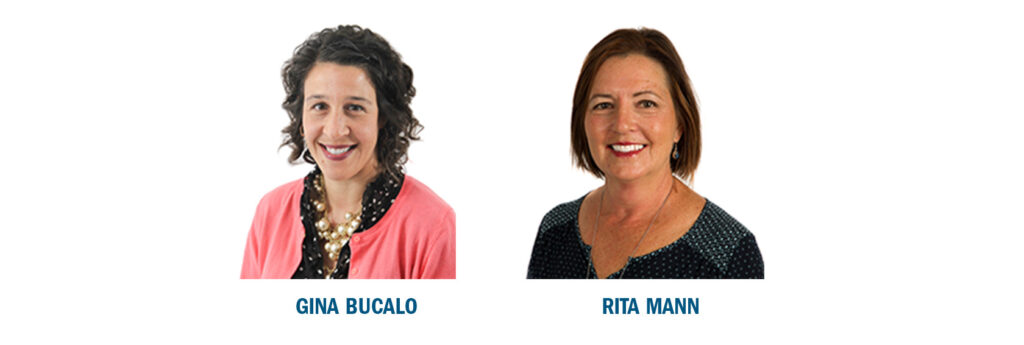Leaders, Give Your People the Gift of Great Communication
“I keep expecting to come to work one morning and see a sign on the door that says, “We’re closed. Thanks for your business.”
My friend Amy laughed when she said this, but it was a real fear. She loved her job but struggled with her company’s organizational leadership, which often seemed indifferent to the impact that decisions made at the top had on employees and customers. The core issue lay with how these decisions were communicated. New policies were handed down without explanation; departments were restructured without input from those involved; programs were dismantled without advance notice.
“The people that run this place seem totally out of touch,” Amy told me after a particularly exasperating day. “I understand why the decision was made, but how they told us was all wrong.”
Poor communication from her organization’s leaders made Amy feel unheard and undervalued. After hearing her story along with countless others over the years, all relating to communication challenges, it’s become clear to me that how leaders communicate (or don’t communicate) to an organization has a big impact on outcomes, morale, and employee retention.
Recently I asked Gina Bucalo and Rita Mann, two of TiER1’s top Communication Strategists, about organizational leadership approaches that help leaders avoid communication pitfalls, gain buy-in, and demonstrate value when communicating with employees, peers, and executives. Whether you’re looking to overhaul your communication style or just want to fine-tune your approach, their insights can help strengthen your ability to be an effective communicator and leader.
What mistakes do leaders make when communicating with employees?
GINA BUCALO: Leaders often feel like they have to have everything figured out before they say anything, and because those things take time, this inevitably delays communication. When you wait until you have everything buttoned up, people end up creating their own stories about what’s happening or where the company is going.
Another mistake I see is focusing on the wrong things—yes, cost savings and productivity are important, but to your people, those are often secondary. Share the vision for the future and how it will benefit those you’re communicating to.
RITA MANN: One mistake is failing to set expectations. When we expect one thing and get another, we can feel blindsided. A second mistake I see is forgetting to provide relatable context. Think like your employee—what do they care about? What do they want to know? How can you make the news relevant to them?
What’s the most important thing leaders should do when communicating with their organization?
GB: Be transparent! Don’t have a clear-cut plan yet? Be open with where you are in the process and be open to dissent. Invite feedback instead of pushing out information and shutting the door.
RM: Lead. Remember that you’re responsible for providing direction and setting up your people for success. Those who have the responsibility and power to operationalize the initiative need your alignment and vocal support or they’ll be fighting a headwind the whole way.
There comes a time when every leader has to share bad news with a large group of employees. What are some best practices for doing this well?
GB: At the risk of sounding like a broken record, I’d say don’t delay. You know the saying, “No news is good news”? Not in the corporate environment. When you don’t say anything, you’re still communicating.
RM: Be honest and specific about how the news is going to impact those you’re speaking to. I would also recommend making connections that move people forward. When we receive bad news, we often want to know what the next steps are. Give them something to think about and potentially do.
How can leaders communicate to gain support from other leaders (both above and beside them)?
GB: When you need buy-in, ask sooner rather than later. Get input early so they can help form the plan—people are much more likely to support something they helped create. This is especially true of those who you know like to be involved in the process! Co-create with them instead of bringing them something fully baked and asking for their stamp of approval.
RM: Couldn’t agree more. The only thing I’d add: make it personal. Meet face to face instead of simply sending an email. Give something of yourself in the process. Get familiar early on with those you need support from instead of waiting until you’re ready to launch.
How can leaders in “softer” spaces (like HR, learning and development, or marketing) communicate their business value to operational leaders?
GB: Talk about the value you add in terms of action—improvements you’ve made, dollars you’ve saved, new paths to engagement you’ve created. Operational leaders want to see concrete evidence. If you don’t have numbers or statistics to support your story, make it anecdotal using quotes from those you’ve impacted. And don’t forget to communicate your story in a strong way. Use an infographic or other type of visual to show how you’re touching the organization.
RM: Connect what you’re doing to two things: customer experience (after all, that’s who it’s all about) and your organization’s strategic vision. Where is the organization headed? How are you actively achieving the mission today and paving the way for business evolution tomorrow?
Have more questions about leadership communications? Let’s talk! Give us a call at (859) 415-1000 or drop us a line in the form at the bottom of this page.





